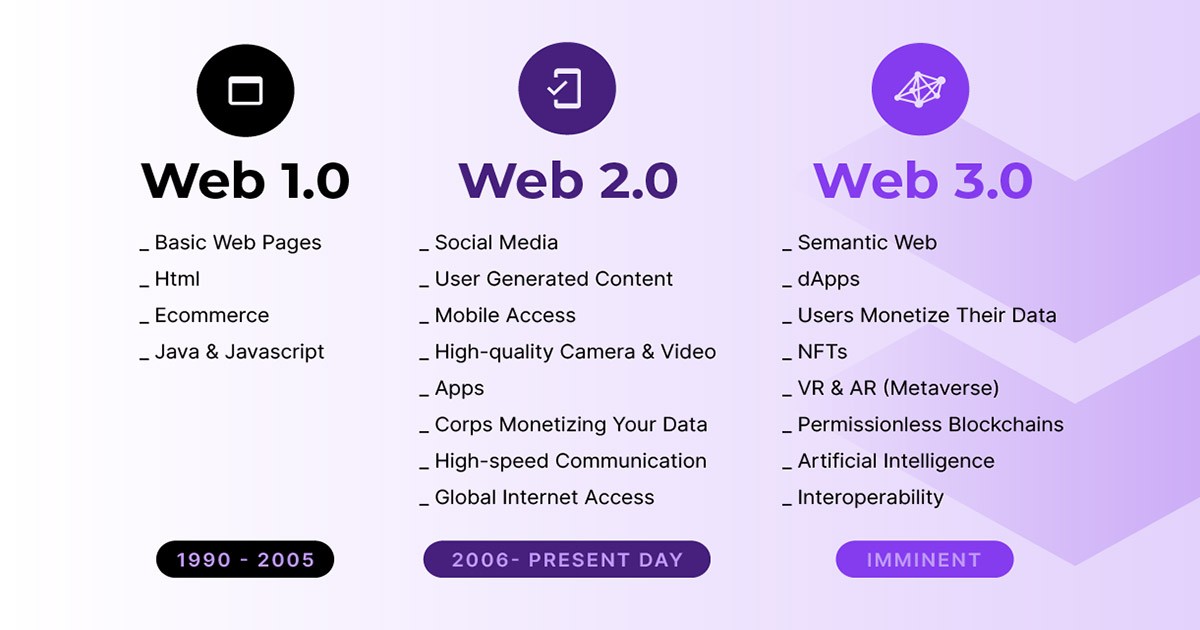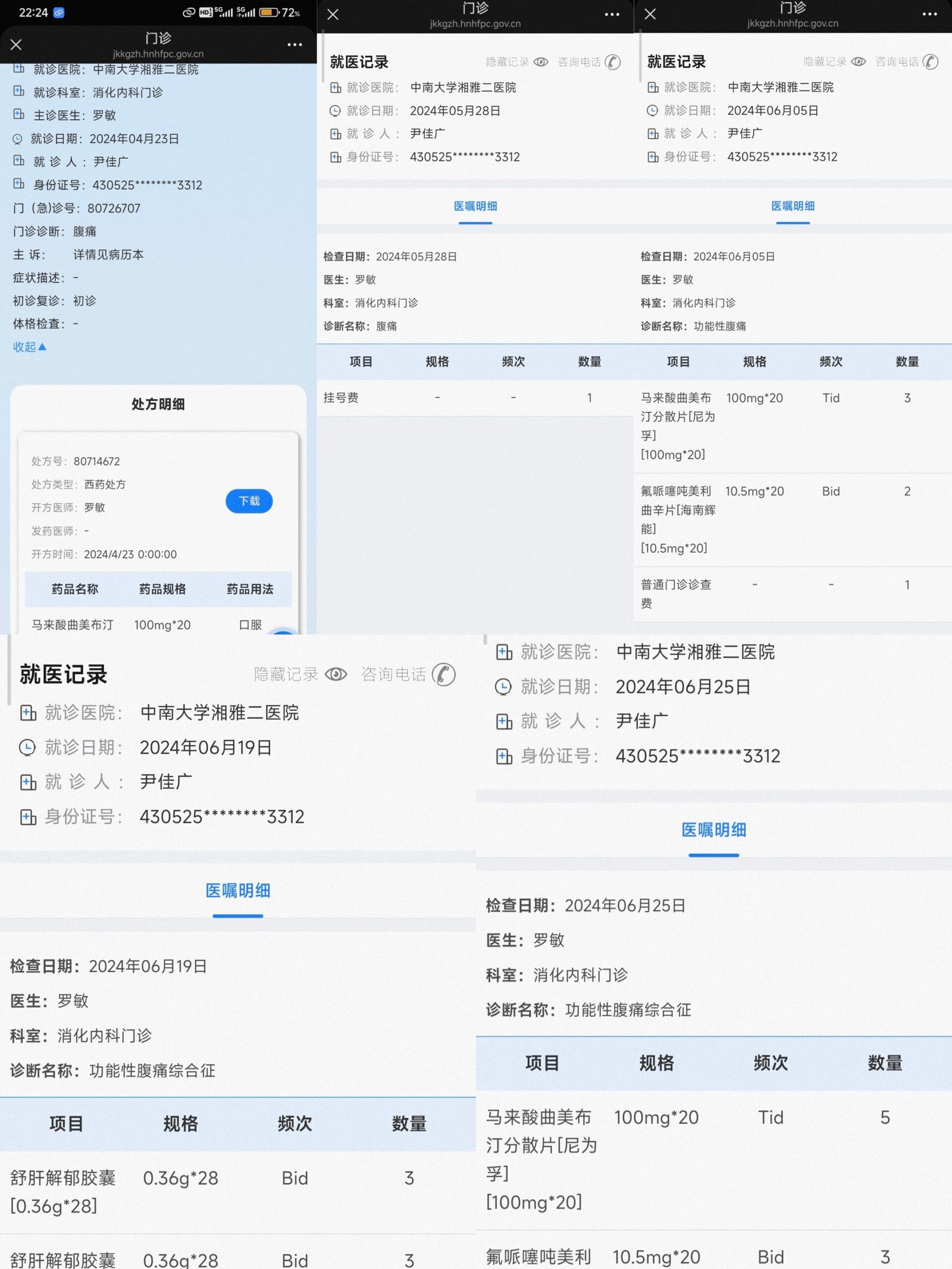Hi everyone, if you have come this far, you are eager to learn something. I have written the following blog to fulfill that desire. Have a good read...
WEB History

-World Wide Web "www". One of the 5 most important turning points in human history, the key to change in the world. When it was first launched, that is, in the Web 1.0 period, people used the Internet only to get information. The person would enter the site, read the information and leave. Because these were the operations that could be done within the Web 1.0 features at that time. There was no colorful internet medium or practical interfaces like today in the Web 1.0 period. This limited people and the internet. There were very limited actions that people could do on the internet. This was an important reason for Web 2.0 to come to life.
-Web 2.0 is based on interactivity, including second-generation internet services, social networking sites, wikis, communication tools, and systems created by internet users by collaborating and sharing. If you are reading this blog on Medium right now, you are doing this action in Web 2.0. Web 2.0 allowed people to both read and write. In other words, you became able to comment under an article or blog you read, and at the same time, you became able to share your own blog, your own article, your own photos, etc. You became able to share many things with the whole internet world, but you could do this depending on a centralized system. In other words, you actually produced the content, you commented on the content, but the platform where you performed these actions earned the money. This led to the emergence of Web 3.0, which is based on decentralization.

-Web 3.0 was fully realized with the creation of the Bitcoin infrastructure by the unsung hero Satoshi Nakamoto. I say "literally" because it had been tried many times before, but all of them failed. Web 3.0 is the new internet infrastructure that is predicted to replace Web 2.0 in the very near future using the Blockchain infrastructure based on decentralization. We will talk about it at length below!
The Basis of WEB 3.0
Web 3.0 is a democratic and socialist vision that allows people to control their own data without being dependent on centralized structures. This vision reduces our dependence on centralized servers and platforms, giving us more control over our data and our online experiences. So what key technologies are used to realize this vision?
System Building Blocks

Blockchain: Blockchain is a secure and transparent database where transactions are recorded in a public ledger, yet highly confidential and verified by a distributed network. This enables trusted and fraud-proof transactions without the need for a centralized authority. So how can they combine both transparency and privacy? That's a topic for the next blog.
Decentralized Application (DApp): DApps are applications that run on the blockchain and can be used without the need for a central server. This gives users more control over their data and makes them more resistant to censorship or shutdown of platforms.
Digital Identities: Digital identities are a technology that allows users to control and manage their online identities. These identities are like today's ID cards and passports, but much more secure. Because they are cryptographically stored and verified, they are extremely secure. Maybe it's not the right example, but the fact that Satoshi Nakamoto has not yet been found by the FBI, despite the fact that he has exchanged e-mails with many people cryptographically, shows us how secure cryptographic infrastructures are.
Advantages and Disadvantages of WEB 3.0
As with every technological development, Web 3.0 has certain advantages and disadvantages. Let's examine them together.
Advantages

Increased Security: Web 3.0 aims to make transactions and data on the internet more secure using Blockchain technology. Blockchain is a secure and transparent database where all transactions are recorded in a public ledger and verified by a distributed network. This significantly increases security on the internet by protecting against fraud and data theft.
Authentication: Web3 helps users protect their online identities more securely by using decentralized authentication systems. Instead of storing users' credentials on a centralized server, these systems store them on a distributed network, such as a Blockchain. (One repository = one place to hack, 100,000 repositories = 100,000 places to hack)
Protection Against Cyber Attacks: Web3 is much more resilient to cyber attacks thanks to decentralized systems and distributed data storage. Systems that operate without the need for a centralized server are more resilient to a single point of vulnerability, making them harder for cyber attackers to target. (One storage = one place to hack, 100,000 storage = 100,000 places to hack)
Increased Privacy: Web 3.0 also focuses on protecting users' online privacy. Blockchain technology enables users' data to be stored encrypted and anonymized, thus enabling users' online privacy. Users have more power to control what data is collected and how it is used.
Increased Transparency: Blockchain provides greater transparency and accountability by ensuring that all transactions are recorded in a public ledger. Despite this transparency, thanks to the systems behind it, it has managed to be both transparent and private at the same time. In my next blog I will explain in detail how they manage to be both transparent and private. Stay tuned.
Increased Democratization: Web 3.0 uses distributed systems and blockchain technology to further democratize platforms and services and give users more control over them. On platforms that are not controlled by a central authority, users are more involved in decision-making and have more say in how the platforms are managed. This makes platforms more transparent and accountable.
Increased Efficiency: Distributed systems and automation make operations in Web 3.0 more efficient and scalable. Systems that operate without the need for a centralized server are more resilient to failure in a single point and can handle more user demand. Automation saves time and cost by eliminating manual processes. The fact that the data in Web 3.0 is kept entirely in a cloud environment eliminates the data storage systems that centralized systems spend billions of dollars, which makes a great contribution to the world economy.
Disadvantages

Complexity: Although "complexity" is not exactly the right word, Web 3.0 uses systems that people are not used to. Many of you are hearing concepts like Blockchain and DApps for the first time, and this may cause some hesitation. Historically, almost all new technologies have faced this problem. Since Web 3.0 is a relatively new technology, it is only natural that this problem arises.
Price Fluctuations: Perhaps the biggest issue that distinguishes Web 3.0 from Web 2.0 and Web 1.0 and makes it more complex than them is price fluctuations. The prices of cryptocurrencies used in Web 3.0 are highly volatile. This can make Web 3.0 transactions risky. For example, investing in a DApp or buying a product using a cryptocurrency can result in losses due to price fluctuations.
-However, Web 3.0 is currently making a significant effort to solve this problem. It is believed that this problem can be solved significantly by establishing decentralized exchanges called DEX. There are currently DEX exchanges being actively established, but it will take some time for them to become widespread. Who knows, by the time you read this blog, Web 3.0 developers may have solved this problem.
Accessibility: Although Web 3.0 is progressing as a socialist system, you need a good internet connection and a good phone, computer, etc. to use Web 3.0 technologies. However, when we look at it, this problem was a problem in Web 2.0 and Web 1.0. As technology develops and the demand for using Web 3.0 increases, the devices produced and the internet systems used will evolve in this direction.
-This is part of Web 3.0 and Web 3.0 technologies. The Web 3.0 era will come no matter what. As Thanos said, I am inevitable!





评论 (0)